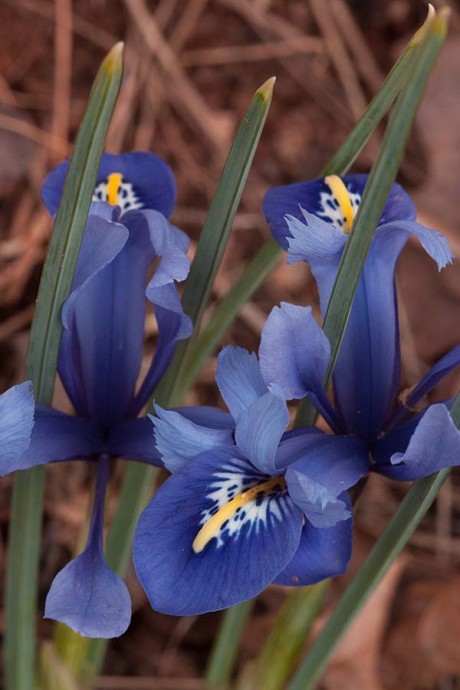Fall for the blues
Plus Garden To-Do's for October and November
By L.A. JacksonBlue is a special hue in the garden because, in comparison to other colors, it is a less common sight among blooming plants. And now is a great time to get the blues in the form of spring-flowering bulbs that show off in shades of blue and can be planted during the pleasant days of fall. These bulbs aren’t the typical tulips and daffodils that are being dug in now by the cartloads, but rather they are lesser known beauties that can have a pleasing impact on your garden’s beauty next spring.
For example, many anemones can be planted now that, next spring, will coat flower beds in a sea of blue. Anemone blanda ‘Blue Shades’ is an aptly named cultivar that can thrive in Carolina gardens if given a well-draining planting site in full or partial sun. Another anemone, A. coronaria ‘De Caen Blue’, will stop visitors in their tracks with masses of pretty blue flowers in the early spring. Similar blue hues can also be had with the semi-double ‘Lord Lieutenant’ and an old standard, ‘Mr. Fokker’.
If you want to experience the blues a little earlier in the year, try selections of Iris reticulata, dwarf irises that can send late winter out in a blue blaze. True to its name, the popular cultivar ‘Harmony’ has mid-blue blossoms that complement rather than compete with other plants in most garden settings. Although a bit harder to find, ‘Joyce’, ‘Rhapsody’ and ‘Lady Beatrix Stanley’ are three addition selections that can turn heads in the new growing season with their cheerful blue blooms.
One bulb that can bring belated blues into the garden is Camassia leichtlinii. Try the cultivars ‘Caerulea’ or ‘Blue Danube’, both handsome plants with iris-like foliage that supports star-shaped blooms on 24- to 36-inch stalks in late April to mid-May. For lovers of native plants, Camassia quamash can put on a similar show, but its blue is blended slightly with a pleasing purple.
Garden to do’s
October
- Using real pumpkins for fall decorations? They will last longer if they still have a few inches of stem attached. Keeping the rind intact will also help, meaning a carved pumpkin will have a shorter show-off life.
- Before herbaceous perennials are nipped to the ground by cold weather, set markers beside them so they won’t accidentally be disturbed or dug up in spring.
- Check the wires on supports and identification tags of spring-planted woody ornamentals to make sure they have not started to cut into limbs or trunks.
- Any shrubs or small trees that are scheduled to be relocated next year in the late winter should be root pruned now to make the future move easier on both the plant and the planter.
- Don’t be too quick to cut down and discard ornamental grass plumes, as they can not only add their special beauty to the winter garden, but they can also accent indoor arrangements.
November
- Be vigilant to keep newly seeded cool-season lawns clear of falling leaves. Remember that a solid covering of leaves will easily mat down (especially when wet) and be detrimental to even established lawns. It is best to rake the yard several times in the autumn, not just once after the last leaf has fallen.
- Have a strange spring-flowering bulb but don’t know which end to plant up? Plant it sideways.
- Rake spent foliage, fallen blooms and summer mulch out of the rose bed, and replace with a fresh, 2- to 3-inch-thick winter mulch.
- Any gasoline left in motorized summer garden helpers such as lawn mowers and weed eaters, should be used up or drained. Gas left in storage over an extended time can lose its fizz and gunk up carburetors.
- Vases, statuary, fences, benches, walls and water fountains are accents that can help keep the garden interesting even in winter.
-
Share this story:



